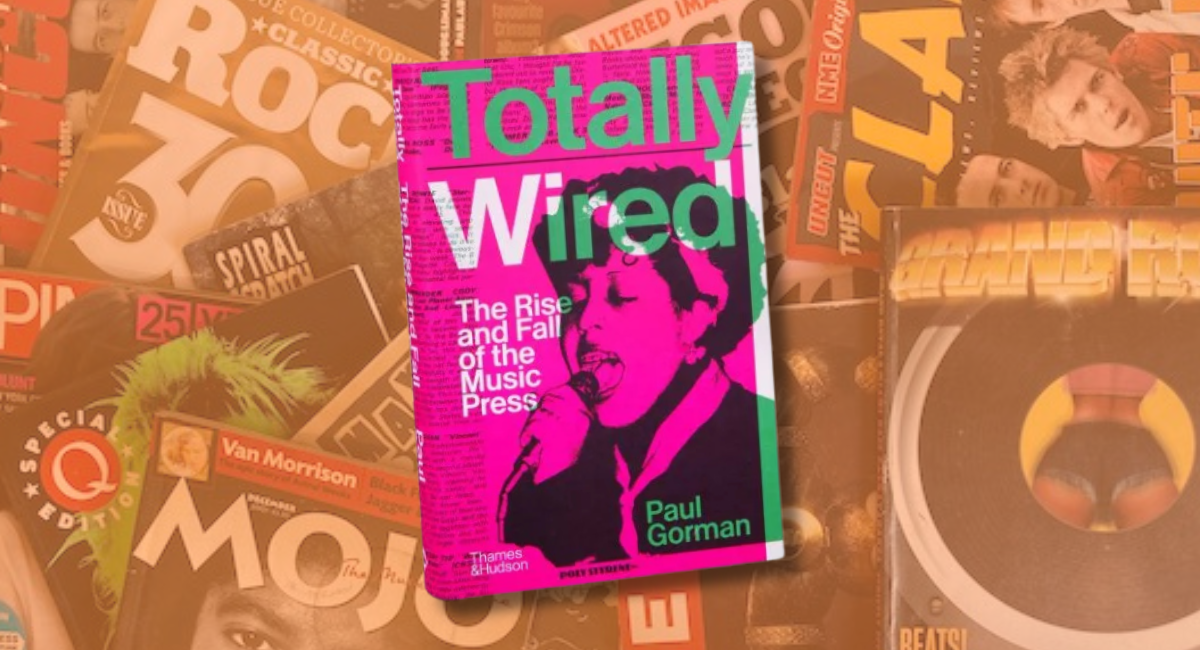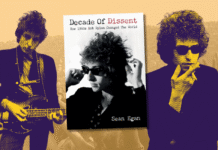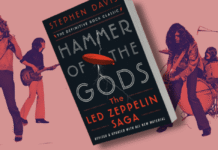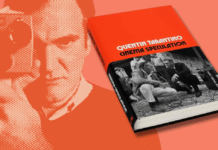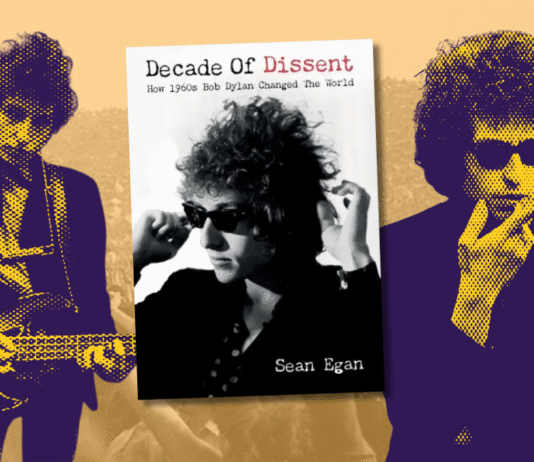Introduction: When the Pen Was Mightier Than the PR Team
Once upon a time, the music press actually mattered. Shocking, I know. In an era before influencers, clickbait and soulless Spotify algorithm playlists named things like Lo-Fi Vibes for Crying in the Shower, people actually paid real money to read what a chain-smoking, amphetamine-fueled music journalist thought about a record.
Paul Gorman’s Totally Wired: The Rise and Fall of the Music Press is a riotous, detailed and often jaw-dropping autopsy of this now-dead beast – a world where deadlines were flexible, cocaine was plentiful and objectivity was considered a middle-class affliction.
If you’ve ever wondered what it was like when journalists partied harder than the bands they covered – and then slagged them off anyway – this is your new Bible.
Table of Contents
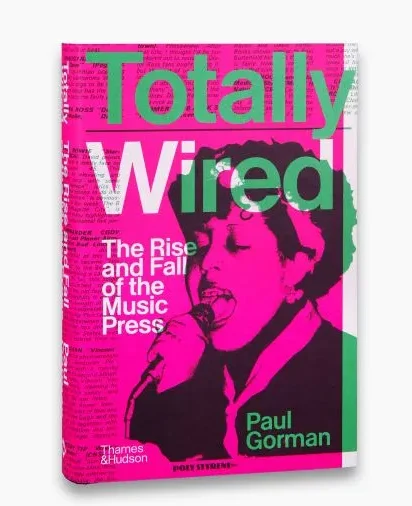
What Is Totally Wired Actually About?
In short: the glorious, chaotic, occasionally corrupt history of the British music press from its meteoric rise in the ’60s to its pixelated demise in the 2000s. Think of it as a 400-page obituary, except the corpse is wearing sunglasses, shouting at a PR intern and demanding more booze.
Gorman doesn’t just retell the story – he drags you through it like a reluctant intern at NME in 1979, bombarded by egos, opinionated weirdos and suspiciously large piles of “party powder.”
Covering legendary publications like Melody Maker, New Musical Express (NME), Sounds and The Face, the book examines how a rag-tag band of journalists shaped public taste, elevated nobodies into gods and occasionally ruined lives for sport – often while barely meeting a deadline.
The Golden Age: Typewriters, Tantrums and Too Much Speed
The book begins in the ‘60s, when music journalism wasn’t really a profession so much as a public service for fans who wanted to know whether The Kinks were on LSD or just really tired. By the ’70s, things got seriously weird. Enter the era of gonzo journalism – or what could more accurately be described as “drug-fuelled stream-of-consciousness rants typed at 3 a.m. on a stolen typewriter.”
Writers like Nick Kent, Charles Shaar Murray and Julie Burchill were as famous – and as chaotic – as the bands they covered. Kent, for example, once showed up to an interview wearing a dog collar and later passed out in the arms of Keith Richards. That was considered normal.
These weren’t critics; they were rockstars with notepads. They didn’t review music – they lived it, rolled around in it, and then wrote 3,000-word screeds comparing Lou Reed to a sexually frustrated vampire.
Gorman details the glory days with loving cynicism, painting the picture of a professional ecosystem powered entirely by sarcasm, talent and cheap lager.
The Power and the Glory (and the Ego Trips)
Back then, a good review in NME could launch a band. A bad one could kill it. Editors wielded power like Roman emperors, deciding which group of dishevelled 20-year-olds from Manchester would headline Glastonbury and which would return to their day jobs stacking shelves.
There were feuds. Legendary ones. Between writers. Between magazines. Between the writers and reality. Sounds hated Melody Maker. Melody Maker hated NME. Everyone hated Smash Hits, probably because it was successful, coherent and printed in colour.
In Totally Wired, Gorman captures the ridiculousness of it all – from the power trips to the petty rivalries to the desperate, beautiful belief that music meant something. Spoiler alert: it did.
The Decline: Death by Internet and Dignity
And then came the ’90s.
The Britpop boom briefly resuscitated the corpse. Suddenly, bands had actual personalities again and Liam Gallagher was basically doing free PR by publicly insulting his own bandmates. The music press gorged itself on this new content buffet – before inevitably overdosing.
The rise of the internet changed everything. Music magazines tried to adapt, like dinosaurs learning to use Twitter. It did not go well.
Print declined. Ad revenue dried up. Readers stopped caring. Suddenly, everyone with a Tumblr account was a “music journalist” and the once-mighty magazines were reduced to BuzzFeed listicles and panicked nostalgia pieces about Blur B-sides.
Gorman details this downfall with the precision of a sniper and the tone of someone both mourning and mocking the deceased. He doesn’t romanticise it – but he does recognise its cultural impact.
The People Behind the Chaos: Characters, Egos, Legends
One of the strengths of Totally Wired is the sheer number of voices Gorman includes. Interviews with dozens of key figures – editors, writers, photographers and assorted weirdos – give the book a vivid, polyphonic feel. It’s like being trapped in a pub full of brilliantly bitter journalists reminiscing about the good old days and slagging off everyone who’s still alive.
You meet real characters: the idealists, the burnouts, the geniuses and the guys who probably still don’t know where the bodies are buried. Gorman lets them speak and the result is a narrative that’s less like a linear history and more like a war diary for cultural combatants.
Why This Book Matters Now (Assuming Anything Still Does)
In an age where music coverage is largely reduced to “10 Best Taylor Swift Breakup Songs Ranked by a Sentient Toaster,” Totally Wired serves as a powerful reminder of when criticism had teeth – and wasn’t afraid to use them.
Gorman doesn’t just look backward, he subtly asks: What did we lose? When we traded opinionated human chaos for polite algorithmic consensus, what did it cost?
Spoiler: quite a lot.
Final Thoughts: Required Reading for Music Nerds, Recovering Journalists and the Chronically Nostalgic
Totally Wired is part history, part therapy session and part drunken eulogy. It’s also laugh-out-loud funny in that specific way only British cultural decay can be.
If you care about music – or just want to read about a time when writers could be egotistical messes and still matter – this is essential reading. Just don’t read it expecting hope. Or closure. Or functioning institutions.
But if you want beautifully written chaos, shot through with dark humour and actual relevance?
You’re wired in.

Totally Wired
Covering the music presss evolution from the 1950s to the 2000s, through rock & roll, Mod, the Summer of Love, Glam, Punk, Pop, Reggae, R&B and Hip Hop, Paul Gorman chronicles the development of individual magazines from Tin Pan Alley beginnings and the countercultural foundation of Rolling Stone, the underground press and the 70s heyday of NME, Melody Maker and Sounds. Illuminated by the authors first hand interviews, Gorman paints a complete picture of the scene exploring the role played by such writers as Lester Bangs, Charles Shaar Murray and Nick Kent in the development of the careers of the likes of David Bowie, The Clash and Led Zeppelin, and tackling head on the entrenched sexism and racism faced by women and people from marginalized backgrounds by shining a spotlight on those publications and individuals whose contributions have often been unfairly overlooked.
Evoking the music presss kaleidoscopic visual identities, Totally Wired is illustrated with rare and legendary magazine artwork throughout. What emerges is a compelling narrative containing conflicting stories of unbound talent, blind ambition and sometimes bitter rivalries which make Totally Wired a rollercoaster and riveting read.
If You Liked Totally Wired, You Might Also Enjoy…
1. Rip It Up and Start Again – Simon Reynolds (2005)
An essential history of post-punk — smart, sprawling, and surprisingly coherent considering the subject matter is bands named things like “Throbbing Gristle.”
2. Feral House: Please Kill Me – Legs McNeil & Gillian McCain (1996)
An oral history of punk that makes you feel like you’re being shouted at by a drunk with a mohawk. In the best way.
3. Psychotic Reactions and Carburetor Dung – Lester Bangs
The original gonzo rock critic. Think Hunter S. Thompson meets a Marshall amp. Less a book, more a punch in the soul.



